It often isn’t a lack of time or knowledge that makes cooking for one challenging. In our experience, it’s the difficulty of preparing tasty meals without mountains of leftovers and piles of dishes.
Introduction
The convenience of takeout is hard to beat, especially when your favorite restaurant is on your way home from work. Sometimes, it even feels more affordable since ingredients aren’t slowly going bad in your fridge. You know the drill – a recipe only calls for half a cup of shredded cheese, you’re still stuck with the rest of the bag (because unfortunately, ingredients don’t usually come in the serving sizes single-home cooks need).
So, how do you cook healthy meals without wasting time, money, or food?
This blog will answer that question once and for all.
Tips When Cooking for One
Anyone who has tried cooking for one knows the struggle – whole recipe books are dedicated to this topic. If this is difficult for you, know that you aren’t alone! Use these eight easy tips to make mealtimes easier.
Embrace “Grocery Planning”
We all know what grocery shopping is, but let me introduce something that is, in our opinion, much more important.
Grocery planning.
If we shop without a plan, we end up with things we don’t need. That’s why grocery planning (and making a grocery list) is helpful before grocery shopping.

Master the Art of Meal Prepping
When you think of meal prepping, you may think of fitness influencers who eat the same boring, bland meal for weeks on end.
The reality is, meal prepping can help you create fresh, unique dishes for every night, even if you don’t like repeating meals. Check out the section titled “Ingredient Prepping” in our Meal Prepping 101 blog to learn step-by-step how to create variety, along with sample meal plans for breakfast, lunch, and dinner.
The idea behind meal prepping is simple: it is an upfront investment of time, money, and resources, but it pays off when you don’t need to turn on the stove halfway through a busy week to have a delicious, healthy meal.
If one of your 2025 goals is to eat healthier, set aside a couple hours weekly to help you achieve your goal.
Use Your Freezer
When you are cooking for one, your freezer is your best friend. It opens opportunities to create individual meals for easy reheating, save ingredients so they don’t spoil, and batch freeze leftovers.
You may be thinking, “well, that’s great, but I always put stuff in the freezer and forget about it.”
Us too! That’s why we have some tips to organize your freezer and prevent food from getting lost.
Keep a Freezer Inventory
Write a list of what’s in your freezer on a whiteboard or a piece of paper and stick it on the door. That way, on busy weeknights, you can just glance at that list instead of getting on your hands and knees to dig around.

Label, label, label
Freezers are useless when you pull items out and can’t tell what it is or when it was cooked. We’ve been there, so to avoid this by labeling everything with the name and date.
Know What Can Be Frozen
A surprising amount of foods can be frozen. Here is a general list:
- Bread (you can toast straight from the freezer) which comes in handy if you can’t eat a whole loaf before the expiration date
- Any fresh produce – just make sure it is prepped, washed, and ready to eat when it goes into the freezer!
- Cooked grains like rice or pasta
Homemade Microwave Dinners
Freeze single-servings of your favorite meals to create your own healthy, homemade “microwave dinners.” Great options include soups, casseroles, and pasta.
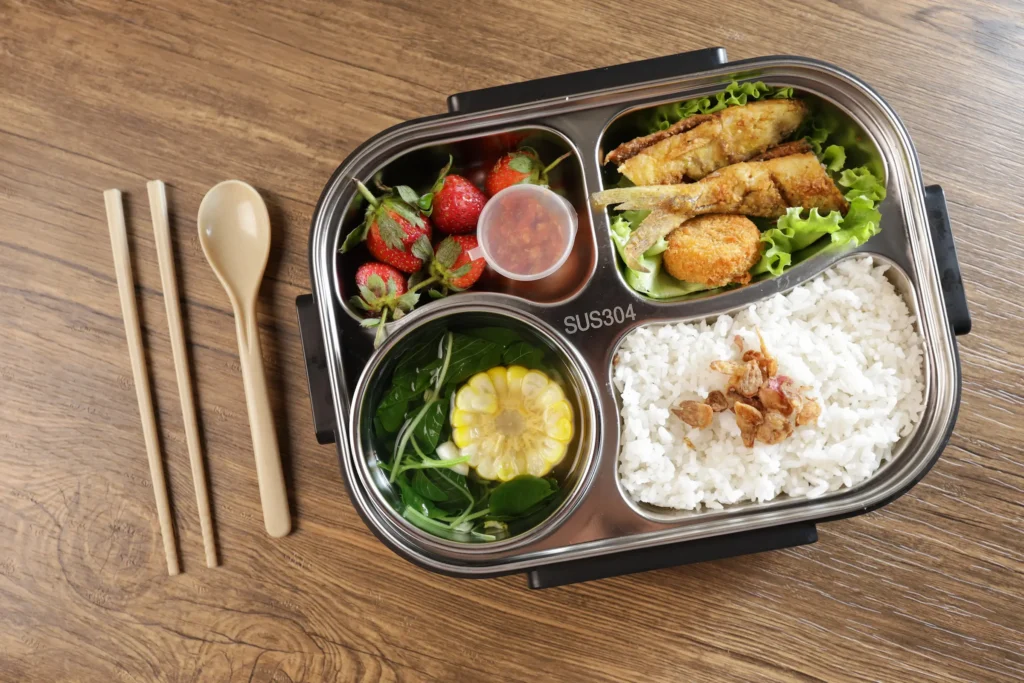
Make a Plan for Your Leftovers
Planning is a common theme in this blog, and this idea applies to using leftovers as well. It’s easy for leftovers to sit in the fridge until they’re no longer edible. Avoid this by planning when you’ll eat them. For instance, if you make a pot of soup on Monday, plan and portion it out to eat for lunch on Tuesday. If you know you’ll be tired of it after Tuesday and you still have extras, store it in the freezer to pull out in a week or two.
If you absolutely despise leftovers, then plan to not have any at all.
How? Slash your recipes in half before you prepare them. Look for a 1/2x option at the top of any online recipe to cut down on leftovers.
Here is an example from the Choose Homemade website.
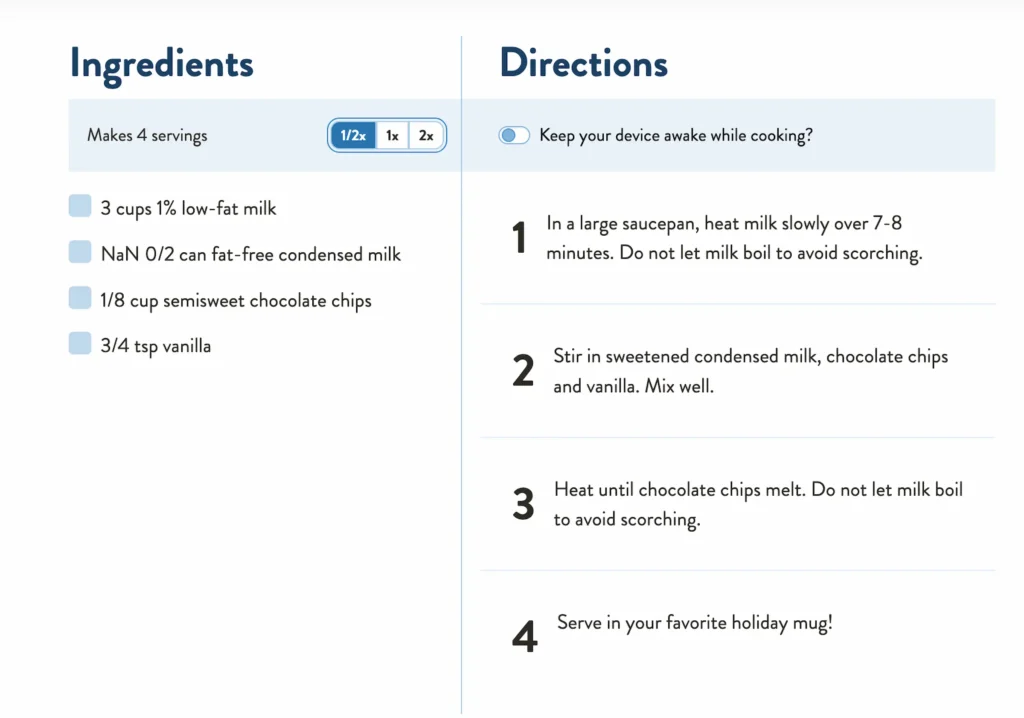
Shop Smart
Use the Deli Counter
Purchase just the right amount of meat, seafood, or cheese instead of prepackaged portions that you will only use half of.
Buy Frozen Fruits and Vegetables
It is a common misconception that frozen fruits and vegetables are less healthy than fresh fruits and vegetables, but this is a myth! Sometimes, frozen produce has even more vitamins and minerals than fresh. This is because they were frozen at peak freshness, rather than being transported hundreds of miles just to lose their optimal freshness by the time they arrive at the grocery store.
If you find yourself throwing away lots of fresh fruits and vegetables, simply start buying frozen varieties. Your wallet (and the landfill) will thank you.
Check out our Broccoli Cheddar Soup recipe, which can easily be made with frozen, pre-cut broccoli rather than fresh!

Quick and Easy Recipes for One
The recipes below are designed for a single-person cook, and they share these qualities:
- Reheat well (perfect for leftovers!)
- Use one pot or pan (for minimal clean up)
- Use seven or fewer ingredients
- Take less than 30 minutes to prepare
Choose the 1/2x feature on the Choose Homemade website to cut down on leftovers, if desired.
Cilantro Lime Salmon
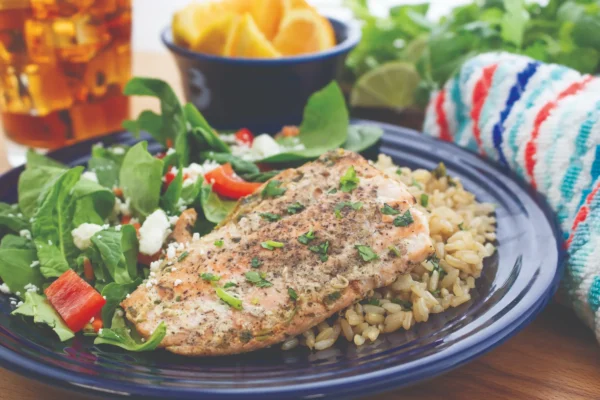
Use microwavable ready rice to make it a one-pot recipe!
Sweet Potato Chili
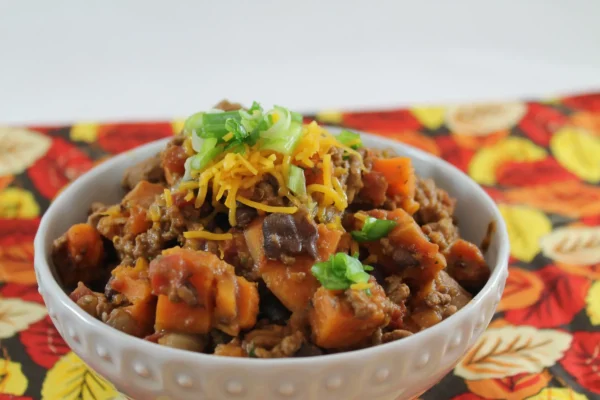
This recipe can be made in one skillet, and only gets better with reheating.
Cheesy Tomato Bake
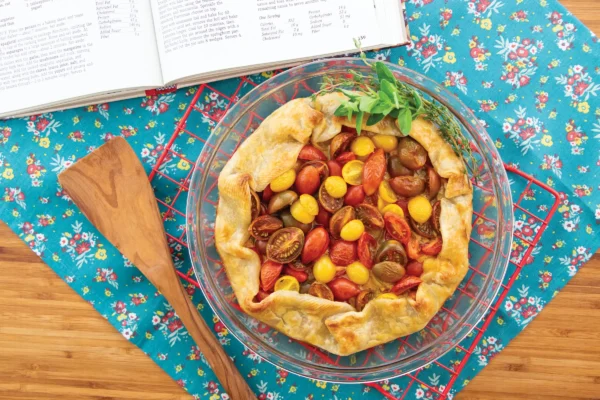
If you want to meal prep this recipe, reheat it in the oven, toaster, or air fryer to keep the crust crispy!
Crockpot Chicken Tacos
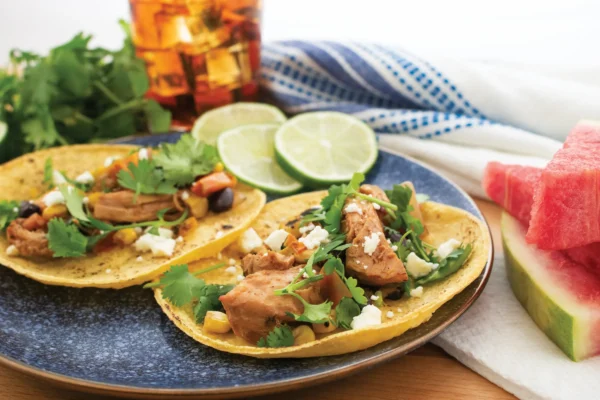
If you have leftover chicken and you don’t feel like tacos again, create a pulled chicken sandwich instead.
Pantry Pasta
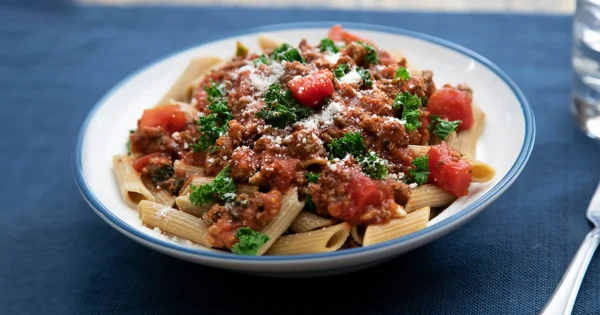
Customize using vegetables that need to be used before they goes bad, mix in the tomato sauce, and you have a perfect one-pot recipe.
Veggie Sloppy Joes
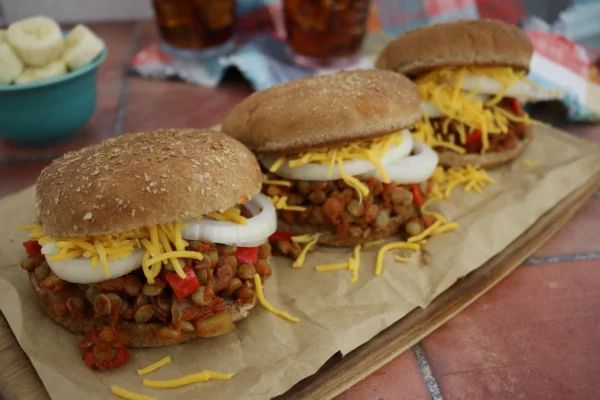
Incorporate this easy recipe into your next Meatless Monday!
Overcoming Challenges to Cooking for One
There may still be something holding you back from cooking at home for yourself, whether it’s a lack of time, skills, or funds, but we cover all this and more in the next section. Consider this your personal Q&A forum to discuss common obstacles to becoming your own personal chef.

Food Cost
Groceries are more expensive than ever, so here are some tips to ensure you get the most bang for your buck:
- Plan a week of meals before you go shopping, and build them using ingredients you already have in the pantry and fridge
- Take an inventory of what you already have before shopping
- Do curbside pickups to avoid the temptation to stock your cart with excess
- Only buy food if you know exactly what you will use it for: either into a recipe or a snack for the coming week. That way you won’t fall into the trap of grabbing something off the shelves, thinking “oh, I’ll eat it sometime this week,” (and never eat it).
Wasting Leftover Ingredients
It’s not only the food that gets wasted when we trash ingredients before having a chance to use them. It’s also the time and effort of buying and paying for them, and from personal experience – it doesn’t feel good. Here are some tips to make sure this doesn’t happen to you:
Freeze Extra
For example, if your recipe calls for half a diced onion, put the other half into a freezer bag, and use it in a future recipe. Make sure to add it to your freezer inventory list so you don’t forget!
Portion into individual servings to avoid a frozen mass when you pull your ingredients out.
Avoid Buying in Bulk
Buying in bulk is often considered a way to save money, but this isn’t always true if you cook for yourself.
Here is an example of what often happens to single-cooks who buy in bulk:
- Option 1: Buy a 2 pound bag of apples, and half go bad before you eat them
- Option 2: Buy a 2 pound bag of apples, and you get sick of apples because you eat so many in a short amount of time so they don’t go bad
Sound familiar?
On the other hand, you can buy two individual apples. Although single apples may be more expensive per pound, you still save money because you are buying fewer and using all of them.

Lack of Time
Set yourself up for success by keeping your kitchen stocked with essentials like whole grains, canned fruits and vegetables, and beans. Refer to our blog, Stock Your Pantry: Essential Staples for Year-Round Healthy Cooking, for a guide to versatile, affordable pantry ingredients.
Lack of Skills
Cooking can be scary if you are new to it, which is why so many of us resort to fast food.
You want our biggest advice?
Just start! Like anything else, beginning your home cooking journey is the hardest part. Once you begin, you’ll see why cooking at home is appealing to both your health and wallet.
If cooking isn’t your thing yet, brainstorm recipes from these easycategories – some of which you don’t even need a stove for!
- Quesadillas (increase the fiber with whole wheat tortillas!)
- Pastas
- Eggs
- Sandwiches
- Slow cooker or crock pot meals
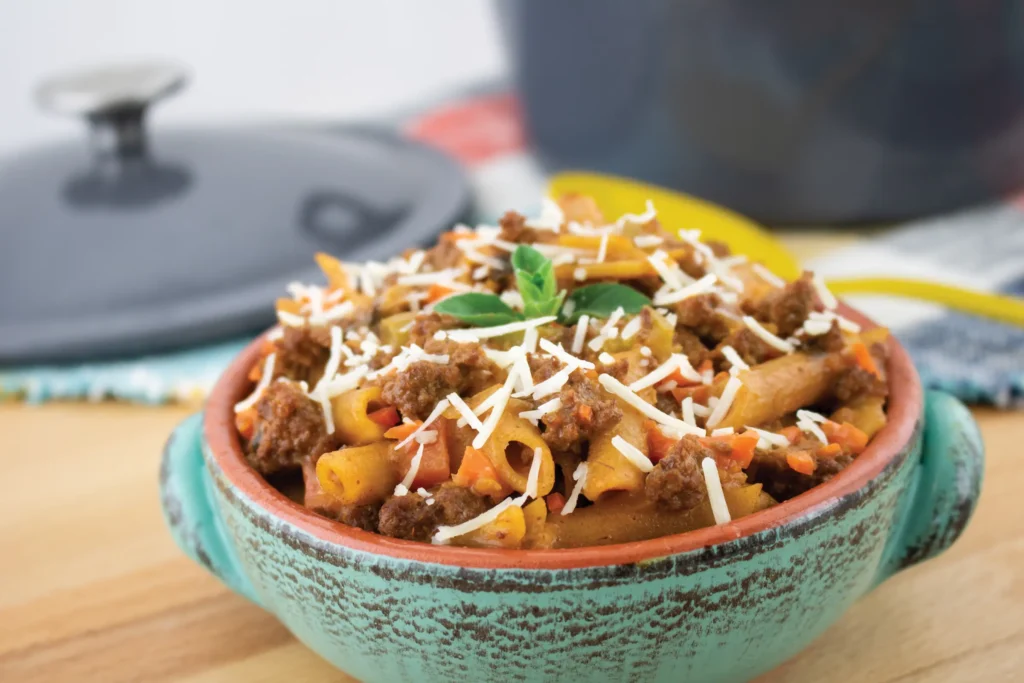
Cleanup
Sometimes, it’s not the cooking that you dread, but the mess that cooking creates. We get it! To make it as easy as possible, you can cook multiple meals at a time to do less dishes in the long run (hello, meal prepping!). Alternatively, use one pot recipes to slash your cleaning time.
Mobility Issues
If you use any sort of walking aid, grocery shopping can be a challenge, not to mention standing in the kitchen or cleaning dishes. These tips may help.
- Buy your ingredients cut, washed, and ready to eat to minimize the time you spend at the counter.
- Do curbside pickup from the grocery store
- If you have support (a friend, family member, or caregiver), ask them to help you prepare meals
- Have ingredients shipped directly to your house
- If you are 60+ years old with limited mobility and none of the above are good options for you, click here to visit the Meals on Wheels website, which may have support services near you.
Conclusion
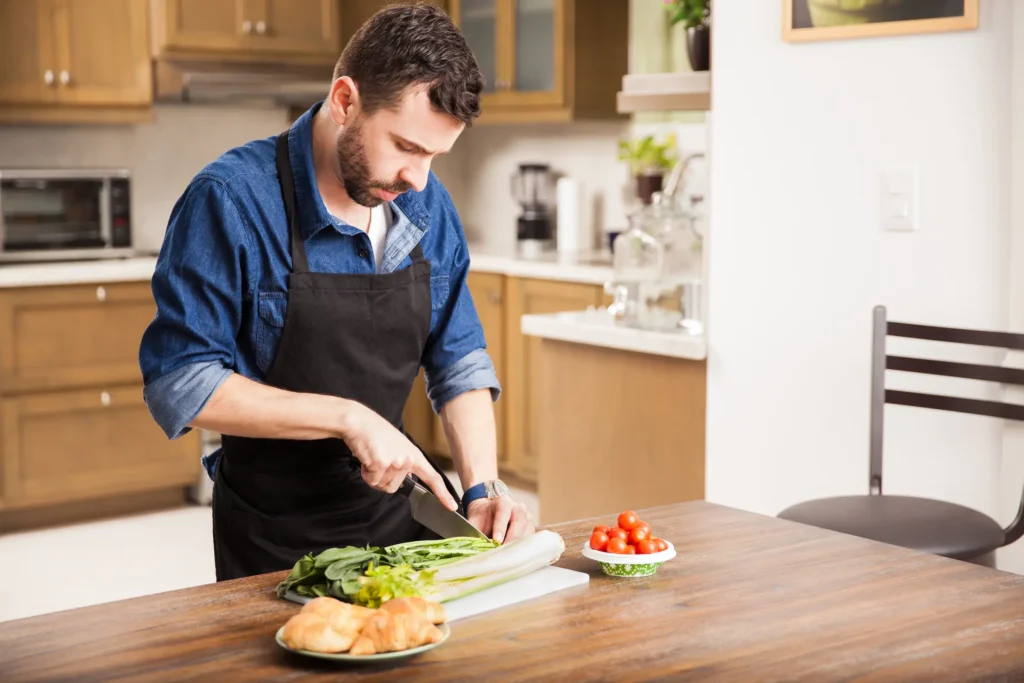
Cooking for one doesn’t have to be difficult or time-consuming. With these tips and recipes, you’ll have everything you need to enjoy low-effort, homemade meals.
Do you have any other challenges that you think may stop you from preparing healthy meals at home? Comment them down below, and we will help you troubleshoot solutions!


